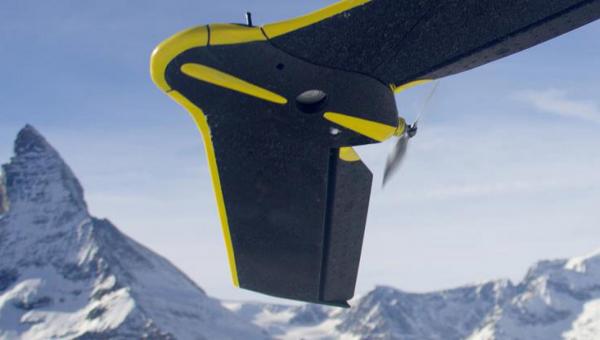A laser as a lightning rod

A new superlaser has been tested on Mount Säntis in Switzerland. The innovative technology could be used in future to protect nuclear power plants and airports from dangerous lightning discharges.
Switzerland alone has around 60,000 to 80,000 lightning strikes each year. The enormous electrostatic discharges are some of the major unpredictable events causing CHF 10 million in damage annually, despite modern lightning protection systems. Lightning strikes are responsible for over 4,000 deaths and billions of Swiss francs in economic loss worldwide every year.
A European research team led by Jean-Pierre Wolf from the University of Geneva has achieved a resounding success in experiments on Switzerland's Mount Säntis: for the first time, scientists have successfully redirected lightning by laser.
A 300-year-old invention becomes obsolete
Up to now, a technique invented by Benjamin Franklin almost 300 years ago has been used to ward off lightning: an earthed metal rod. The idea of using lasers for lightning protection is not new: the first experiments involving laser-guided lightning were conducted in the 1990s. But it took another 30 years before the experiment finally succeeded on Switzerland's Mount Säntis. The team has proudly published the results of their research in the journal Nature Photonics: "We believe that this experimental breakthrough will lead to advances in lightning protection and lightning physics," the article's abstract reads.
Experiment at an altitude of 2,500 metres
The research consortium conducted their successful experiment in the summer of 2021 on Mount Säntis in north-eastern Switzerland using a terawatt laser with a high repetition rate. The laser, weighing three tonnes, was brought to the 2,500-metre summit by helicopter. It is eight metres long and 1.5 metres wide. It was installed near the 124-metre-high telecommunications tower, which receives up to 100 lightning strikes a year.

Impressive pictures of the tests carried out on the summit of Mount Säntis.
Significantly better protection
With the laser slightly tilted so that it came close to the top of the tower, the scientists' camera images showed that the lightning struck the tower's lightning rod after winding several times around the laser beam. In comparison to lightning without a laser, the laser-guided lightning struck the lightning rod much more accurately.
The results of the experiment, which took almost a year to evaluate, show that the lightning discharge could follow the beam for almost 60 metres before reaching the tower, meaning that it increased the radius of the protection surface from 120 m to 180 m.
Long way to go
Unlike other lasers, this invention works even in difficult weather conditions such as fog. This is because it can literally pierce the clouds. It will be a long time before the superlaser is used at airports or nuclear power plants. First, the research team wants to do more experiments to increase the range of the laser even further. The aim is to extend a 10 m lightning rod by 500 m.




